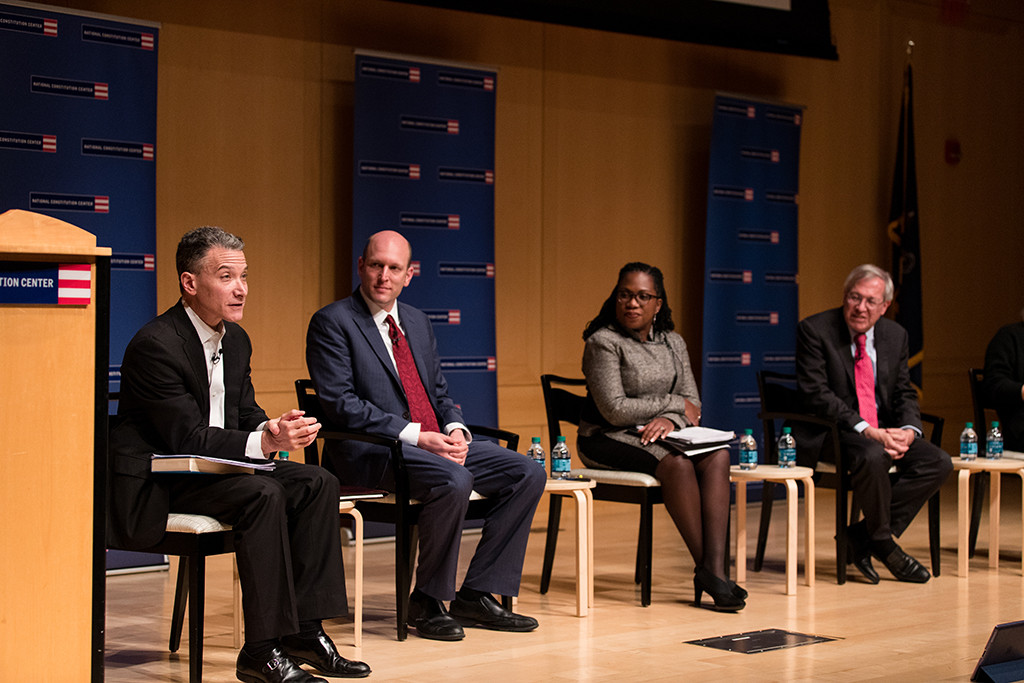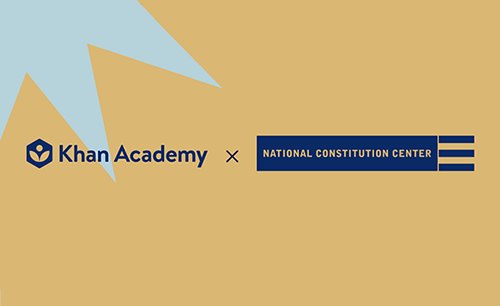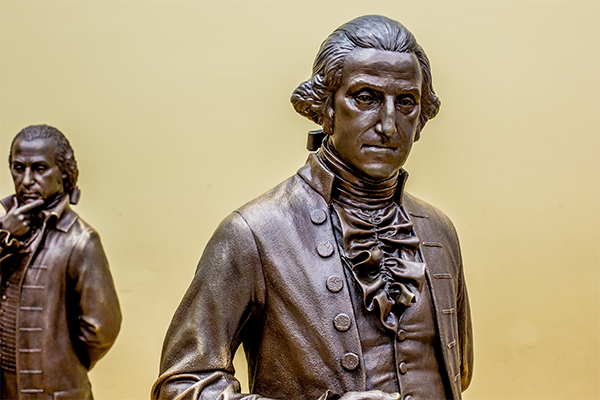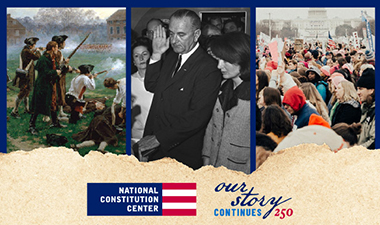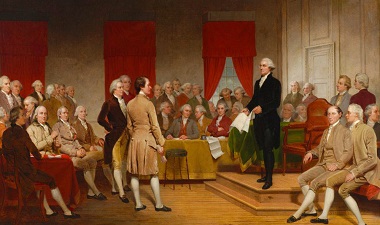The topic of President Donald Trump’s desire for Canada to become part of the United States is very much in the news, but about 249 years ago a similar discussion was under way.
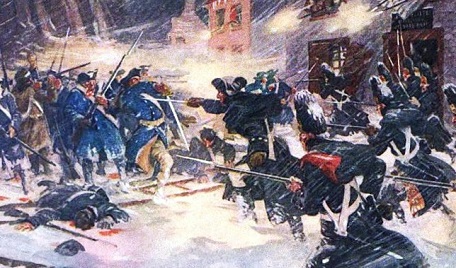 For a five-year period at the American Revolution’s start, including Canada into the newly formed nation was a priority for the founding era’s leaders as part of the conflict with Great Britain. There was even an open invitation made to Canada to join the United States in the Articles of Confederation. That quest ended in 1779 when Canada became less of a priority during the conflict.
For a five-year period at the American Revolution’s start, including Canada into the newly formed nation was a priority for the founding era’s leaders as part of the conflict with Great Britain. There was even an open invitation made to Canada to join the United States in the Articles of Confederation. That quest ended in 1779 when Canada became less of a priority during the conflict.
A series of events and conflicts put Canada’s role in the American Revolution very much in the forefront. In a 1952 article in the American Historical Review, Murray G. Lawson detailed a very fluid situation as the founders of the United States struggled with the idea of Canada as a friend or foe.
The passage of the Quebec Act of 1774 by the English Parliament angered the colonists who had formed the First Continental Congress two weeks earlier. The British had acquired all of the territory in Canada controlled by France at the end of the Seven Years’ War in 1763. The crown then created a new province of Quebec in the inhabited areas of the former New France within Canada.
The Quebec Act of 1774 extended the boundaries of the province of Quebec to the Ohio River, and gave French-speaking residents religious freedoms and a French civil law system. The colonial leaders of Virginia opposed the Quebec Act since they had land claims in the Ohio River area and New Englanders were concerned with the return of Catholic leadership in Quebec.
Initial Outreach to Canada
On the last day of the First Continental Congress on Oct. 26, 1774, a long letter written by John Dickinson, Richard Henry Lee, and Thomas Cushing was addressed to the French-Canadian residents of Quebec. Prepared in French, it warned them their British rulers did not have their best interests at heart, and they should send French-Canadian delegates to the Second Continental Congress in Philadelphia on May 10, 1775.
According to Lawson’s account, the French Canadians wanted to remain neutral, but they were also offended by various comments of American leaders denouncing Catholicism, including statements in a letter sent from the Continental Congress to “the people of Great Britain” that called Catholicism “a religion that has deluged your island in blood, and dispersed bigotry, persecution, murder and rebellion through every part of the world.”
As the Second Continental Congress opened in Philadelphia in May 1775, American forces had captured Fort Ticonderoga and Crown Point and raided a fort in southern Quebec. Congress sent a second letter to “the people of Canada” written by Samuel Adams, Silas Deane, and John Jay that called the Canadians “friends” that hoped they would join the Americans “in defense of our common liberty.”
Instead, Guy Carleton, the British governor of Quebec, declared martial law and hostilities soon ensued. American forces led by first General Philip Schuyler and then General Richard Montgomery took Montreal on Nov. 13, 1775, and then attacked Quebec City. However, the British forces successfully defended the city and Mongomery was killed in battle. On Jan. 24, 1776, a third letter from the Continental Congress, written in part by James Wilson, was sent to the Canadian people, asking them to send delegates to Philadelphia to attend Congress. But according to Lawson’s research, the French clergy and leaders in Canada had lobbied heavily against the Americans with the local population.
Franklin, Canada and the Articles of Confederation
On April 29, 1776, a diplomatic commission authorized by the Second Continental Congress in Philadelphia arrived in Montreal with several goals in mind. Acting on instructions drafted by a committee that included John Adams, the commission sought the participation of Canada in the new United Colonies of North America.
None other than Benjamin Franklin led the commission, along with Samuel Chase and Charles Carroll. They also sought military volunteers in Canada for their cause and the cooperation of Native American tribes living at the border between Canada and the United States.
Franklin’s commission arrived in Montreal in late April 1776. Prior to the commission’s journey, John Adams in his private correspondence wrote ,“the unanimous voice of the continent is Canada must be ours. … In the Hands of our Enemies, it would enable them to influence all the Indians upon the Continent.” Robert Morris made similar comments, noting Canada “must be ours at all Events. Should it fall into the hands of The Enemy they will soon raise a Nest of Hornets on our backs that will Sting us to the quick.”
Franklin’s stay in Montreal was brief and met with little success. He departed on May 10, 1776, as the American forces began to withdraw over the next six weeks. One highlight from his trip to Canada was that Franklin acquired a marten fur cap he later wore in France, which quickly became a sensation in Europe.
Special Online Town Hall (May 12): Constitutional Meaning in the Shadow of the Articles of Confederation
But the quest to add Canada to the newly formed United States did not end there. After the Declaration of Independence was signed on July 4, 1776, the Continental Congress drew up a draft of the Articles of Confederation on July 12, 1776, that included a provision for Canada to join new nation. The final version approved in November 1777 and ratified by the states in 1781 became Article XI of the Articles of Confederation:
“Canada acceding to this confederation, and adjoining in the measures of the United States, shall be admitted into, and entitled to all the advantages of this Union; but no other colony shall be admitted into the same, unless such admission be agreed to by nine States,” the document read.
During 1778, the Continental Congress considered a second adventure into Canada under the leadership of the Marquis de Lafayette. Congress also told its envoy in France, Benjamin Franklin, to ask the French government if it would provide arms for the invasion. Among the objectors to the scheme was George Washington, who feared the presence of a large French military force in Canada, and the plan was abandoned in January 1779. Congress formally decided that Canada was no longer “an object of last importance to the welfare of the United Colonies” in August 1779.
During the era when the Articles of Confederation served as the first constitution for the nascent United States, the inclusion of Canada into the new nation was no longer a prominent issue, and it was not mentioned during the known debates at the Constitutional Convention of 1787 in Philadelphia. The new Constitution replaced Articles of Confederation and it included in Article IV, Section 3 a provision for Congress to add new states to the union.
Scott Bomboy is the editor in chief of the National Constitution Center.


